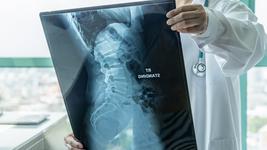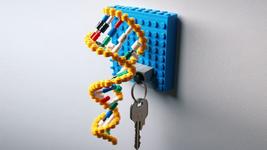Prime Editing Can Become the Future of Vision Loss Treatment

Gene therapy research is full steam ahead trying to provide novel treatments and cures for diseases caused by harmful genetic alterations in humans. The advent of CRISPR and other related gene-editing tools, such as base editing and the recently emerged prime-editing method, collectively offer vast options to directly edit human DNA ex vivo and in vivo.
Congenital retinal diseases comprise a heterogenous group of conditions that result in progressive loss of sight. To date, treatment options including recently developed gene supplementation therapies are only available for a subset of these diseases, leaving a large number of patients without a treatment. After winning a grant of just over 3 million Danish kroner (400,000 EUR) from the Velux Foundation (a philanthropic funding body in Denmark), PhD student Silja Hansen MD, who is based at Aarhus University in Denmark, aims to develop a new treatment based on a gene-editing method called prime editing, to slow the progression of inherited retinal diseases.
Here, Silja Hansen speaks with CRISPR Medicine News to share an inside view on where this new project may lead.
A way to tackle heterogeneous genetic diseases
- Hi Silja, it’s nice to meet you. Before we get into your project, can you tell us about the causes of inherited retinal diseases and how impactful these conditions are?
Inherited retinal diseases are a large group of diseases, which all affect the retina in the eye. The diseases are characterised by the dysfunction and degeneration of photoreceptors and/or the retinal pigment epithelium, resulting in progressive vision loss and blindness.
Each condition is different in relation to the severity of vision loss and time of onset, i.e., whether symptoms start in childhood or later in life. Inherited retinal diseases affect 1 in 2,000 people worldwide and represent a leading cause of vision impairment.
- What was the motivation to investigate gene editing to ameliorate vision impairment?
To date, various variants in more than 250 genes have been directly linked with an inherited retinal disease. Although gene replacement therapies have recently shown to be successful for the treatment of autosomal recessive variants, this treatment option is not feasible for the large number of diseases that are either caused by variants in genes that are too large to be supplemented or that are inherited in an autosomal dominant manner. This means that there are still thousands of people out there that will suffer from severe vision loss or even become blind from a retinal disease for which there is no treatment.
In many cases, the only thing a patient can do to manage their disease is go to an ophthalmologist and have their case followed and monitored, but without any effective treatment. A versatile gene-editing platform that could treat many of these diseases would completely transform the lives of these patients. The motivation behind this project is to develop a gene-editing approach that may have the potential to treat more of these diseases, and thereby improve the current treatment landscape and the outcome for the individual patient in the future.
- What are the main goals of the project?
The aim of the project is to establish prime editing as a possible treatment option for inherited retinal diseases that cannot be treated by gene replacement therapy or other gene-editing approaches, e.g., base editing, and could therefore uniquely benefit from prime editing. In a first step, we want to design and validate prime-editing guide RNAs (pegRNAs) to target some of the main disease-causing variants. pegRNAs function both as a guide to the desired target and as a template for the desired edit, and are therefore essential for prime editing efficiency. Then, we will use pre-clinical cell models and reporter cell lines to test those pegRNAs to get a good idea about the best performing options for each of the variants.
Prime editing: the new kid on the block
- What exactly can prime editing do here that the other gene-editing modalities cannot?
Prime editing is a new CRISPR-Cas9-based gene-editing tool that is very versatile compared to other gene-editing methods. Let’s start with CRISPR-Cas9. This method causes the formation of a double-stranded break at the target site followed by non-homologous end joining (NHEJ) or homology-directed repair (HDR). While the NHEJ pathway is error prone, HDR requires a donor template and is inefficient in non-dividing cells, which accounts for the majority of retinal cells. In addition to that, the creation of a double-strand break has shown to increase the risk of chromothripsis (chromosome scattering).
Base editing does not generate a double-stranded break, but it is limited to transition mutations, and depending on the target site, its use may be limited by the target window and the risk of bystander edits.
Prime editing, although still very new, has the potential to correct all kinds of point mutations as well as smaller deletions and insertions that cover a large amount of the variants underlying inherited retinal diseases. It functions as an all-in-one system – you have the pegRNA that directs the enzyme complex to the target site and it also functions as its own template, and it does not require a double-strand break.
- Are there any challenges associated with prime editing?
Yes, the prime editing method is still in its infancy. One of the challenges in prime editing is finding a pegRNA that can create the desired edit and achieve high targeting efficiency. Right now, we have a number of candidate pegRNAs to validate and once we find the most effective ones, we will go forward with those for further testing in pre-clinical models.
Another major challenge, which is not only relevant for prime editing but any large gene-editing tool, is the delivery of the gene-editing cargo. The most established delivery vector for the receptor cells in the retina is the adeno-associated virus (AAV), but the prime-editing construct is too large to fit in one AAV particle. This is also something we would like to address in our project. Previous studies have looked at the possibility of using a dual-AAV to deliver a split prime editor system. We would like to test this strategy further, but we may also investigate different delivery options, including non-viral delivery methods.
Fact Box
In CRISPR, a Cas9 enzyme catalyses a DNA double-strand break in the target sequence, which is targeted by a guide RNA. The desired edit is carried by a donor DNA template that is introduced via homologous recombination.
Base editing uses a Cas9 nickase fused to a cytidine or adenine deaminase, together with the guide RNA for targeting. It allows the introduction of point mutations in the target sequence by nicking the DNA instead of generating a double-strand break. Base editors introduce specific nucleotide conversions, namely C>T (cytidine base editors) or A>G (adenine base editors).
Prime editing makes use of a catalytically-impaired Cas9 fused to an engineered reverse transcriptase enzyme. The associated prime-editing guide RNA (pegRNA) is used not only for targeting, but it also contains the intended edit. The system allows for the guide RNA sequence to be reverse-transcribed directly into the target region, introducing the edit without the need for a separate donor template or a double-strand break.
Read past CMN articles about prime editing here.
The eye is a good target for gene therapy
- How easy will it be to deliver a prime-editing treatment to retinal cells?
The eye is quite a good target for gene therapy because it is compartmentalised, almost immune-privileged, and it is possible to deliver cargo really close to the target cells directly, using subretinal injection.
- How about safety and efficacy?
So far, studies that involve prime editing have revealed low off-target profiles, but there is not much in vivo data available yet. In our study, efficacy and safety in terms of retinal delivery, and possible toxicity in the retina will be tested in mouse models in vivo. To study efficacy and off-target effects in a more translatable context, we plan to use patient-derived cells and potentially also retinal organoids. As a practical example, for diseases affecting the retinal pigment epithelium, patient fibroblasts or induced pluripotent stem cells may be used. For diseases affecting the photoreceptors, cell organoids may be the better model, as they provide a model of the retinal tissue as a whole.
- How will you verify the progression of the therapy after injection?
In this project we will use mouse models that have a retinal phenotype which is similar to that in inherited retinal diseases. These models simulate what happens in humans and we can use some already established methods to follow the progression of the disease. As an example, we will use OCT (Optical Coherence Tomography) scans to obtain a cross-section live imaging of the retina and Fundus Photography.
- Since the tissues of the eye cannot regenerate when damaged - even if the variants underlying the disease are fixed - that damage will be difficult to revert. This would suggest that only those people who are treated very early during the course of their disease would greatly benefit from a gene correction therapy. Are you planning to target early-stage disease? How do you plan to address this issue?
Yes, that is absolutely correct and a very relevant question. It is essential for the success of gene therapy (both for gene editing and gene replacement) that the photoreceptors are only in the early stage of degeneration as late-stage degeneration and photoreceptor loss is difficult to revert. Therefore, it is important to identify patients who may benefit from a gene therapy in an early stage of the disease. Here, identification of affected families, thorough ophthalmological examination, genetic testing and referral to retinal specialists are key factors for clinical application in the future.
In our study we will use pre-clinical models of early-stage retinal degeneration to test the prime-editing approach.
Clinical translation is on the cards
- Do you plan on taking this to clinical trials down the line?
Yes, this is definitely a long-term goal, but at this stage still quite far away from being reality. Before clinical application, we need to be absolutely sure about both efficacy and safety.
Prime editing is a technology that is very much in its infancy; it is one of the newest gene-editing tools and we need to be sure that it is safe. It is not as effective as we need it to be yet, and a number of studies in translational cell and animal models will need to be performed before application in a clinical trial. Our goal is to bring the method a step closer to a clinical setting.
I will conduct a part of my postdoctoral work in the laboratory of Professor Robert MacLaren at Oxford University. His research group has experience with clinical trials for ocular gene therapy and working with his group will broaden my knowledge within this area. The rest of the postdoctoral work will be performed in the laboratory of Professor Thomas Corydon at Aarhus University, as well as at the Department of Ophthalmology, Aarhus University Hospital, Denmark
- What do you intend to achieve within the next 3 to 5 years?
The main goal would be to complete efficacy and safety testing in relevant in vivo models and in patient-derived cells for at least one of the variants causative for inherited retinal diseases. Our aim is to achieve very good efficacy, target specificity and a low off-target profile.
As another important goal, we aim to address the delivery issue of the prime-editing components, which I consider to be quite essential and as I mentioned previously is a big challenge.
Achieving all of this may provide the foundation to advance the project towards clinical trials.
- How would you describe the final output of this project?
It really depends on what we find during the project. If we find an effective pegRNA candidate that is extremely efficient for one certain disease-causing variant, it will be possible to go far in terms of clinical translation within the project period. If we get encouraging results that allow us to implement prime editing in a broader approach for more variants, it will be more of a proof-of-principle for the technique as a possible treatment option for inherited retinal diseases in general. We are very much at the beginning of the project; it would be great to talk again when the project is well on its way.
This interview has been condensed and edited for clarity.
To get more of the CRISPR Medicine News delivered to your inbox, sign up to the free weekly CMN Newsletter here.
Tags
ArticleInterviewMost readNewsCongenital Retinal DiseasesPrime editors
CLINICAL TRIALS
Sponsors:
Wave Life Sciences Ltd.







